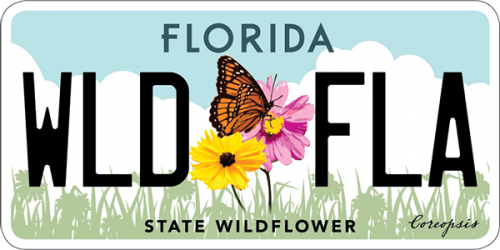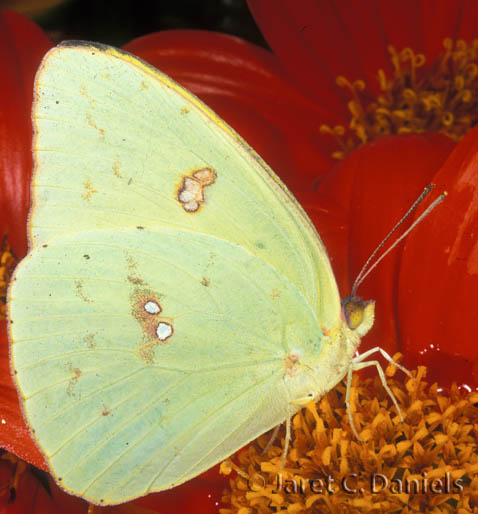- Family name: Pieridae/Whites and Sulphurs
- General description: Male clear yellow. Female yellow to white-green with darker spots along wing margins; forewing with round hollow cell spot. Ventral forewing and hindwing with pink-bordered silvery cell spots; females with additional pinkish-brown spots on both wings. Winter form (dry season) individuals more heavily pattered on ventral wing surfaces.
- Field Marks: General: large Male: clear yellow wings Female: wings white-green to yellow; dorsal forewing with round hollow cell spot;
- Sexes: appear different
- Wingspan: 50-68 mm
- Life Cycle: Egg: white, spindle-shaped, laid singly on host leaves Mature larva: variable; green with yellow lateral stripe marked by blue spots to yellow with blue transverse bands Chrysalis: green to pink
- Number of Generations: multiple
- Flight Season: All year
- Abundance: Common
- Habitat: forest margins, disturbed sites, fields, roadsides, gardens
- Larval Host Plants: Partridge pea (Cassia fasciculata), sensitive pea (Cassia nictitans), sicklepd senna (Cassia obtusifolia), coffee senna (Cassia occidentalis), candle plant (Cassia alata)
- Similar Species: Orange-barred Sulphur
- Additional Information: Migratory; adults overwinter in reproductive diapause. Range is limited in Colorado and Nevada.
- Range in Florida
 The Florida Wildflowers & Butterflies projects at the Florida Museum are sponsored in part by the State of Florida and the Florida Wildflower Foundation, Inc.
The Florida Wildflowers & Butterflies projects at the Florida Museum are sponsored in part by the State of Florida and the Florida Wildflower Foundation, Inc.
